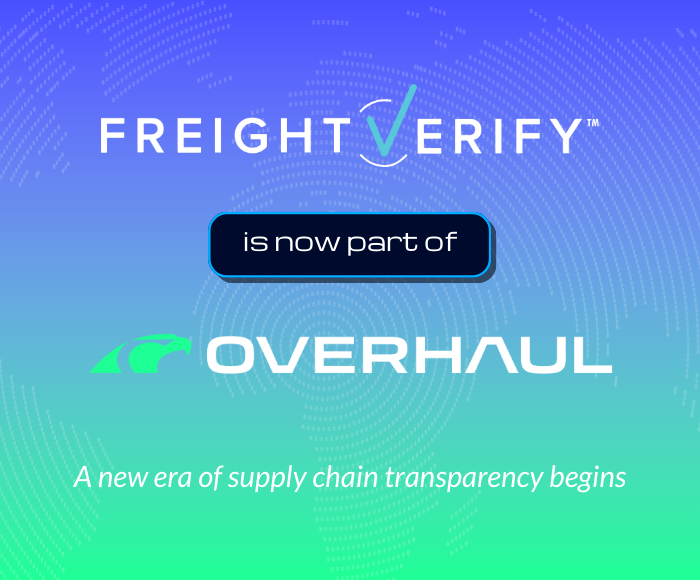The title of this article is a question that everyone in the supply chain risk management community has tried to answer. Is there a way to remove the risk that supply chains run? The answer is a simple, clear and resounding no.
Unfortunately, due to weather conditions, natural disasters, political instability, economic realities, common pilferage and just plain bad luck there will always be a measure of risk to any supply chain. But, there are steps that organizations can take to mitigate encountering that risk, or if not – minimize the harm it causes to their organization.
With the current climate of uncertainty in the air, taking steps to reduce your supply chain operations’ potential risk exposure is critical for efficient continued operations.
Supply chain risk management explained
Supply chain risk management is like its name suggests: It’s a discipline about minimizing the risks that your supply chain takes and mitigating their impact.
However, simply knowing the risks are out there isn’t enough when looking to set up a supply chain risk management strategy. The old-school approach of risk management heavily relied on taking action after the fact of a hiccup or disaster to ensure that the organization’s supply chain got back on its feet.
Given recent events and the recent rise of disruptions, this approach has proven to not be cost or time effective. Real risk mitigation and management includes taking a proactive approach to understanding, assessing and following through on the steps to mitigate the risks that your organization may face far ahead of time. It requires planning, foresight and unparalleled knowledge into how your supply chain functions down to a granular level.
Managing supply chain risk is of vital importance to any supplier of goods. Without it you open yourself up to major liabilities for your company’s ability to compete in the market, as well as increase reputational risk. Each of these risks needs to be addressed or there is an increased risk of significant loss. To give an example, 80% of trade, as of 2019, was done in countries with declining political stability scores.
The trend of global political instability has only grown since then – creating a necessity for corporations to look closely at their risk management strategies to maintain a competitive advantage.
Developing a strategy for proactive supply chain risk management
There are many steps that an organization can take to ensure that their entire supply chain is as protected from disruption as possible. On a wide scope, there are three key elements that every risk management team should always bear in mind when looking to build out a strategy. At a high-level, every operation that our organization can take should fit within these three buckets, and all three categories need to be taken seriously in a complete strategy. Those three elements include:
Foresight:
Your team needs to be able to look at potential threats ahead and understand if they are going to be a long term problem for your organization. This includes paying attention to higher frequencies of risk factors including inclement weather events, potential political or socio-economic flashpoints and higher incidences of pilferage. By using this foresight, you’ll be better able to plan out your supply routes or goods distributors to avoid any major potential loss for your organization. But, foresight is good only up to a point, your organization needs to be able to also know what’s going on at in real time and be able to react quickly in case something does go wrong.
Visibility:
Having a granular sense of how your supply chain is operating is integral to maintaining effective operations and managing risks. Knowing where your cargo is at all times and its condition can mean the difference between avoiding a shipment going missing, being stolen or allowing any contents to suffer spoilage (in the case of perishable goods).
This granular level of visibility can also grant your organization the power to adjust schedules quickly in the case of delays, allowing you to contact your partners or people who may be expecting your goods at a certain time. Being able to quickly see the state of your cargo can help your organization with risk identification and blends into the next step of your resilience strategy, remediation.
Remediation:
While nobody wants a potential risk situation to turn into actual risk, it inevitably will. In the supply chain management world, it’s just a fact of life. With that in mind, your organization needs to have a mitigation strategy in place for when things do go wrong and you are faced with a disruption event. This includes a set of contingency plans on how to get your supply chain back on track in the cases of the events listed above in the foresight stage of supply chain risk management planning.
In many cases, the faster that your organization can react to an unexpected event, the faster they can clean up the damages and minimize the fallout. This is where granular visibility over your supply chain network comes into play. Knowing where your cargo is at all times and its condition can help your team quickly identify if something is amiss – and immediately take pre-planned steps to rectify the situation.
Actionable steps your organization can take to improve its risk management strategy
One of the best ways to take a step forward in your company’s ability to manage risk is to take steps to digitize your supply chain. This will give your company the ability to quickly gain the data and oversight it needs to understand how their supply chain is actually functioning, both on a macro and micro level.
Through the new levels of visibility that your organization will have, you’ll be able to quickly identify trends that you would not have been able to see before, and mitigate your risk exposure by using your newfound knowledge to optimize your supply chain routes in a way that avoids disruption. The higher visibility that a more digitized supply chain brings also assists organizations to be more proactive in their planning phase. To butcher an old adage, a plan is only as good as the data that informs it; and a digitized supply chain presents a far richer data set than more traditional methods.
That being said, implementing your own supply chain risk management tools can be difficult, time consuming and may not be as effective as you would have hoped. Enter risk management as a service (RMaaS) organizations. These companies can help organizations quickly get their supply chains up to a standard of foresight, visibility and remediation ability in a way that delivers a strong ROI. Organizations like these (coincidentally, Overhaul is one of them) have the tools to transform your supply chain into a proactive and sturdy entity which can foresee risks, better understand their supply chain, and know exactly how to deal with any risk exposure which might appear.
How Overhaul assists with supply chain risk management strategies
Overhaul’s visibility and risk management solutions have helped companies like yours change how they view and protect their supply chains since 2016. We give organizations the ability to go beyond just visibility into their supply chains and move into the realm of true knowledge and mastery over them. Our track record with helping businesses mitigate their risk is impeccable, from giving them the foresight to mitigate disruptive events, to the visibility and remediation capabilities to minimize any unforeseen event. When it comes to risk management, we also boast some impressive stats, such as:
- An 80% reduction in theft attempts.
- 30% cost savings in your supply chain from digitizing.
- A whopping 96% recovery rate of stolen goods thanks to our technology and relationships with law enforcement around the world.
- A projection to track 5.3 million shipments in 2022 and that number will only increase as the years go by.
At Overhaul, we view ourselves as experts in the craft and art that is supply chain management, and our wide team of staff who have come from the industry help us to build solutions and services that are made specifically for you. If you’d like to learn more about how we can help you with your supply chain risk management strategy, contact us today.






